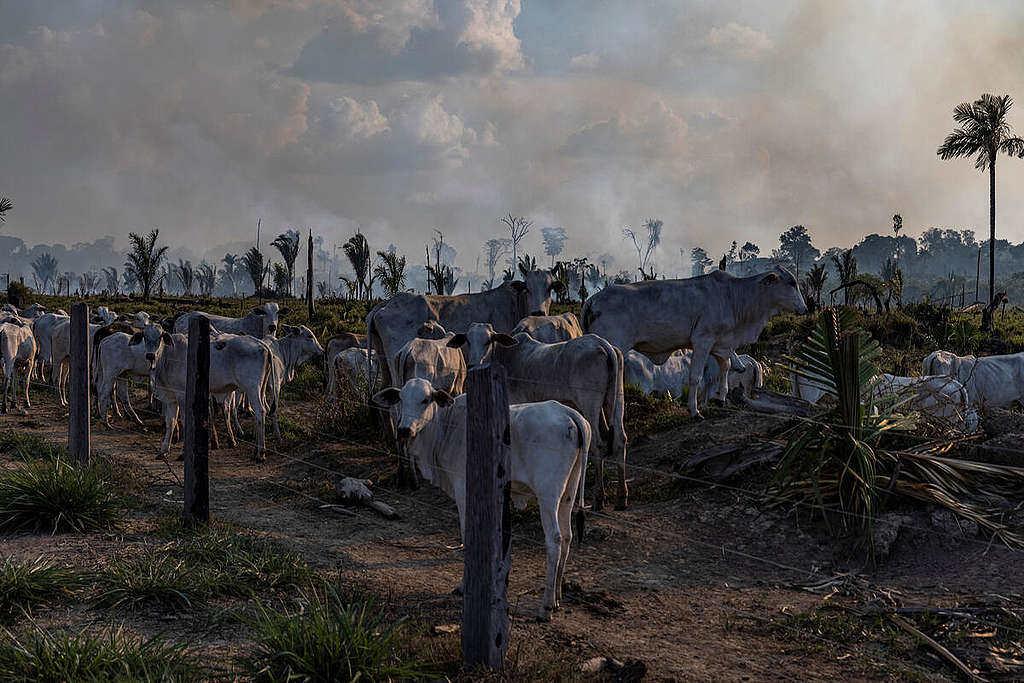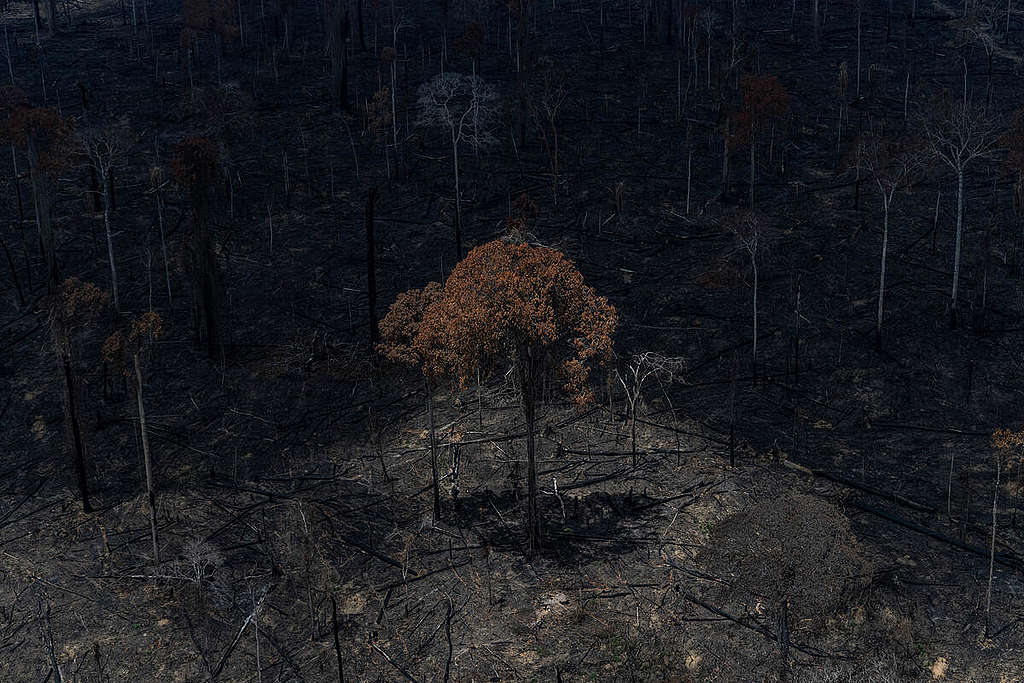During our field trip to the Amazon, our visit to the city of Porto Velho was quick but intense. We talked to several people who are being impacted by the expansion of agribusiness in the region. The last person I interviewed was an agroextractivist, a person whose livelihood depends on sustainably sourcing products such as rubber, nuts and açaí berries from the forest and had been forced out of his land by large-scale landowners, said something that stuck in my head: when he was approached to sell his land, he was told "you can either sell me your land for the price we are paying, or it will only cost 4 Brazilian Reais". The price of a bullet.
This is what the violence linked to the so-called development that has historically prevailed in the Amazon looks like. A development that never actually serves the people of the region, who instead, end up being forced to abandon their lands and livelihoods and migrate over a "promise of opportunity" that never arrives.
The people we spoke to are especially concerned about the latest of such promises of regional development, one that imitates the expansion of the agribusiness in the Cerrado – a biome in Brazil that has been highly consumed by industrial agriculture, leaving behind a trail of injustice and violence.

According to professor and geographer Amanda Michalski, the development strategy for the southern region of the Amazon – which includes parts of Amazonas, Acre and Rondônia states, although framed as sustainable, is based on industrial agriculture and not on sustainable practices, in which policies are geared towards large-scale properties.
What this means, in reality, is the intensification of deforestation in the southern region of the Amazon, where, for instance, the local government of Rondônia State has reduced the size of Conservation Units, benefiting land-grabbers, and opened up mining on one of the main rivers in the area.
One of the actions foreseen within the scope of public investments to make the development of the region viable is the expansion of infrastructure, which facilitates the advancement of the deforestation frontier and gradually opens the way for agribusiness to consolidate itself more and more in the area. One of the projects that make up this plan is the paving of a key highway connecting the cities of Manaus and Porto Velho.
The concern is that branches will start to establish off of the highway between more remote municipalities, literally opening the way for deforestation - exactly what happens today in the most critical deforestation frontier in the Amazon, in the state of Pará, along another big highway.
There are reports that two of these branches are already under construction off of two small towns in the Amazon. That means opening access to an almost intact part of Amazonian forests where there is a large stock of carbon and biodiversity. Unfortunately, Brazil has not been able to properly mitigate the environmental impacts of projects like this before carrying them out. The highway in the state of Pará is again an example of such mismanagement.

In two towns of Humaitá and Lábrea, in the south of the Amazon, you can already feel the land speculation in the air. The quiet Lábrea, where the Purus river runs and the Transamazônica highway starts, did not experience deforestation and fires (which tend to be concentrated in the south of the municipality) closely, but this has changed in recent years. We even went into a newly deforested area that was still burning.
In Lábria, we also heard reports of the accumulation of land nearby, invasions of Indigenous Lands, and something else that caught our attention: the city's plan to build a bus station and that recently new bus lines were established between Lábrea and the cities of Humaitá, Manaus and Porto Velho – the two main cities in the region. The flow of people through the city is expected to increase soon.
In Humaitá, we were able to see some areas being prepared for soy. It is a very characteristic type of intervention, due to the removal of all the branches from the ground so that the machinery can operate in the field. Humaitá was the first city in the state of Amazonas to have soy plantations, and the advancement of the grain in the region, as well as in the north of Rondônia state, also appeared as a concern.
In the cycle of land-use change, soy is usually the third element. The beginning is usually through the predatory removal of timber, then the use of the areas are converted for a few years to cattle ranching (and depending on the location it remains as livestock) and after the land conversion is more consolidated, that's where soy comes. From both the cities of Porto Velho and Humaitá, infrastructure projects indicate that soy will advance through the region, occupying areas previously used as pasture.
Despite having witnessed many sad reports and seen newly deforested and burned areas up close, we were also able to see some light at the end of the tunnel. We went to meet those who are doing it differently, fighting for forms of development that coexist with the forest and bring permanent progress. Stay tuned for the next chapter of this story, and join the movement to Stand with the Guardians of the Amazon.






